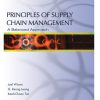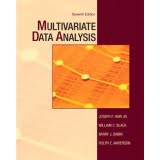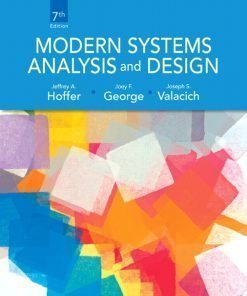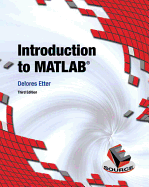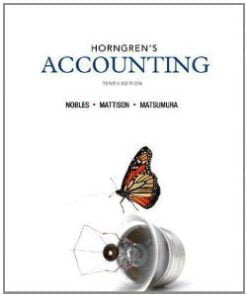Solutions Manual to accompany Engineering Economy 6th edition 9780073205342
$35.00 Original price was: $35.00.$26.50Current price is: $26.50.
Solutions Manual to accompany Engineering Economy 6th edition 9780073205342
Solutions Manual to accompany Engineering Economy 6th edition 9780073205342

Product details:
- ISBN-10 : 0073205346
- ISBN-13 : 978-0073205342
- Author: John A. White
Engineering Economy, 6th edition, provides undergraduate students and practicing professionals with a solid preparation in the financial understanding of engineering problems and projects, as well as the techniques needed for evaluating and making sound economic decisions. Information on cost estimation, depreciation, and taxes has been updated to conform to new tax laws and a majority of the end-of-chapter problems are revised or new to this edition.
Distinguishing pedagogical characteristics of this market-leading text include its easy-to-read writing style, chapter objectives, worked examples, integrated spreadsheets, case studies, Fundamentals of Engineering (FE) exam questions, and numerous end-of-chapter problems. Graphical cross-referencing is indicated so users are able to locate additional material on any one subject in the text.
Table contents:
Chapter 1 Engineering Economic Analysis
1.1 Introduction
1.2 Time Value of Money
1.3 Ten Principles of Engineering Economic Analysis
1.4 Systematic Economic Analysis Technique (SEAT)
1.5 When the Time Value of Money Need Not Be Considered
1.6 Summary
Chapter 2 Time Value Of Money
2.1 Introduction
2.2 Cash Flow Diagrams
2.3 Simple Interest Calculations
2.4 Compound Interest Calculations
2.5 Multiple Compounding Periods in a Year
2.6 When Compounding and Cash Flow Frequencies Differ
2.7 Special and Limiting Cases of Time Value of Money Factors
2.7 Summary
Appendix 2.A Continuous Compound Interest Calculations (brief treatment)
2.A.1 Discrete Cash Flows
2.A.2 Continuous Cash Flows
Chapter 3 Borrowing, Lending, And Investing
3.1 Introduction
3.2 Four Methods of Repaying Loans
3.3 Which Repayment Method Is Best for the Borrower?
3.4 Real Estate Investment
3.5 Interest Payments and Principal Payments
3.6 Retirement Planning
3.7 Equivalence and Indifference
3.8 Purchasing and Selling Bonds
3.9 Variable Interest Rates
3.10 Summary
Chapter 4 Establishing The Planning Horizon And The Minimum Attractive Rate Of Return
4.1 Introduction
4.2 Choosing the Planning Horizon
4.3 Specifying the Minimum Attractive Rate of Return
4.4 Summary
Chapter 5 Present Worth Analysis
5.1 Introduction
5.2 Comparing Alternatives
5.3 Present Worth: Single Alternative
5.4 Present Worth: Multiple Alternatives
5.5 Present Worth: “One Shot” Investments
5.6 Discounted Payback Period: Single Alternative
5.7 Discounted Payback Period: Multiple Alternatives
5.8 Capitalized Worth: Single Alternative
5.9 Capitalized Worth: Multiple Alternatives
5.10 Summary
Chapter 6 Future Worth Analysis
6.1 Introduction
6.2 Future Worth: Single Alternative
6.3 Future Worth: Multiple Alternatives
6.4 Maximizing the Investment Portfolio
6.5 More on Unequal Lives
6.6 Summary
Chapter 7 Annual Worth Analysis
7.1 Introduction.
7.2 Annual Worth: Equal Lives
7.3 Annual Worth: Multiple Alternatives
7.4 Least Common Multiple of Lives Assumption
7.5 Unequal Lives Re-Visited
7.6 Capital Recovery Cost
7.7 Summary
Chapter 8 Rate Of Return Analysis
8.1 Introduction
8.2 Internal Rate of Return: Single Alternative
8.3 Internal Rate of Return: Multiple Alternatives
8.4 External Rate of Return: Single Alternative
8.5 External Rate of Return: Multiple Alternatives
8.6 Analyzing Alternatives with No Positive Cash Flows
8.7 Summary
Appendix 8.A Modified Internal Rate of Return
8.A.1 Single Alternative
8.A.2 Multiple Alternatives
Chapter 9 Depreciation Methods
9.1 Introduction
9.2 Background on Depreciation Accounting
9.3 Straight Line Depreciation (SLN)
9.4 Declining Balance and Double Declining Balance Depreciation (DB and DDB)
9.5 Switching from DDB to SLN with VDB
9.6 Modified Accelerated Cost Recovery System (MACRS)
9.7 Comparison of Depreciation Methods
9.8 Summary
Appendix 9.A Sum-of-Years-Digits Depreciation
Appendix 9.B Other Depreciation Methods
9.B.1 Unit of Production Method
9.B.2 Operating Day (Hour) Method
9.B.3 Income Forecast Method
Appendix 9.C Depletion
Chapter 10 After-Tax Economic Analysis.
10.1 Introduction.
10.2 Tax Concepts.
10.3 Corporate Income Taxes.
10.4 After-Tax Cash Flow without Borrowing.
10.5 After-Tax Comparison of Alternatives.
10.6 After-Tax Cash Flows with Borrowing.
10.7 How Much Money Should a Company Borrow?
10.8 Additional Tax Considerations.
10.9 Timing of Investment versus First Year’s Depreciation Charge.
10.10 Summary.
Chapter 11 Replacement Analysis.
11.1 Introduction.
11.2 Cash Flow Approach.
11.3 Opportunity Cost Approach.
11.4 Section 1031 Exchanges.
11.5 Optimum Replacement Interval.
11.6 Summary.
Chapter 12 Inflation Effects.
12.1 Introduction.
12.2 Using Indexes to Measure Inflation.
12.3 Before-Tax Analysis in Inflationary Conditions.
12.4 After-Tax Analysis in Inflationary Conditions.
12.5 After-Tax Analysis with Inflation and Borrowed Capital.
12.6 Summary.
Chapter 13 Supplementary Analysis.
13.1 Introduction.
13.2 Breakeven Analysis.
13.3 Sensitivity Analysis.
13.4 Risk Analysis.
13.5 Summary.
Appendix 13.A Decision Tree Analysis.
Chapter 14 Economic Analysis In The Public And Regulated Sectors.
14.1 Introduction – The Nature of Public Projects.
14.2 Build-Operate-Transfer.
14.3 Objectives in Public Project Evaluation.
14.4 Guidelines in Public Sector Evaluation.
14.5 U.S. Federal Government Guidelines.
14.6 Using SEAT in Public Sector Evaluations.
14.7 Benefit-Cost and Cost-Effectiveness Calculations.
14.8 Important Considerations in Evaluating Public Projects.
14.9 Introduction – The Revenue Requirements Method.
14.10 Definition of Terms.
14.11 Determining the Minimum Revenue Requirement.
14.12 Showing Equivalence between Revenue Requirement and ATCF Methods.
14.13 Summary.
Appendix 14.A OMB Circular No. A-94, Revised Table of Contents.
Chapter 15 Capital Budgeting.
15.1 Introduction.
15.2 The Classical Capital Budgeting Problem.
15.3 Unequal Investment Durations.
15.4 Capital Budgeting with Divisible Investments.
15.5 Using Excel to Solve the Capital Budgeting Problem with Divisible Investments.
15.6 Practical Considerations in Capital Budgeting.
15.7 Summary.
Chapter 16 Obtaining And Estimating Cash Flows.
16.1 Introduction.
16.2 Cost Terminology.
16.3 Cost Estimation.
16.4 General Accounting Principles.
16.5 Cost Accounting Principles.
16.6 Summary.
Appendixes.
People also search:
engineering economy 6th edition
engineering economy examples
engineering economics examples
engineering economy questions and answers
principles of engineering economic analysis 6th edition pdf
best engineering economics textbook
Related products
Solution Manual
Solution Manual for Introduction to Electrodynamics, 4/E 4th
Solution Manual
Solution Manual
Solution Manual



